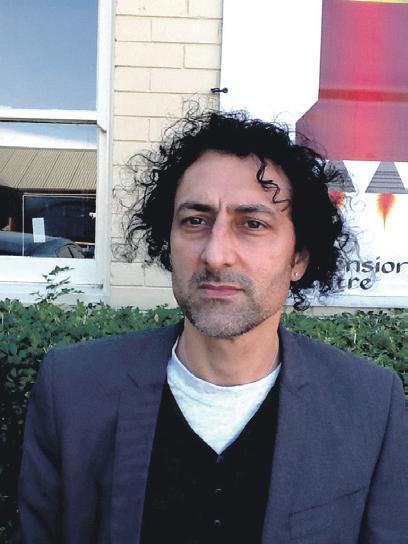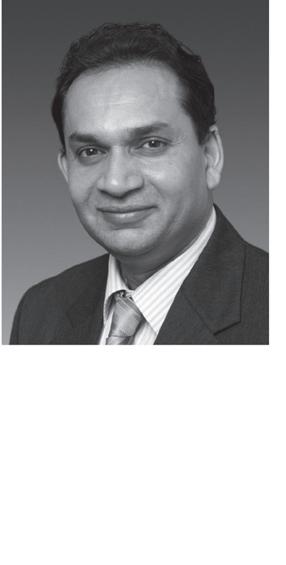
5 minute read
there is glamour in spying
from 2013-12 Sydney (1)
by Indian Link
The spying scandal is recent, but intelligence gathering by stealth has been practiced for ages
BY NOEL g DE SOuZA
Spying at high governmental levels has been in the news recently. Angela Merkel and other European leaders displayed their anger that the Americans had been spying on them. They felt outraged and let down. After all, one spied on one’s enemies but not on one’s friends. Were not the Americans their friends?
News reports suggest that the European leaders were angry that their private conversations were also being listened into. How can a ‘spying’ or ‘intelligence’ agency distinguish between a personal and public conversation before it is recorded and analysed? This matter now appears to be resolved after a high level delegation was sent to the USA. However, the issue has stirred up a hornet’s nest.
documents and these were being selectively leaked to the press, or certain members of the press had managed to obtain the keys to break into the sites where these documents had become available.
Assange continues to remain in asylum in the Ecuadorian Embassy in London where he in incarcerated until he can freely move about with no fear. There are ethical questions in the Wikileak exposures: is it right for someone entrusted with secret documents to make them public? Would one consider such an act as a breach of trust or does the public have a right to know what is being pursued by a government which the people put into power?
Indonesia is furious that Australia is spying on them, and that is vitiating their otherwise cordial relationship
The ramifications of the spying scandal are sprouting elsewhere, such as between Australia and its neighbours, particularly Indonesia. Indonesia is furious that Australia is spying on them, and that is vitiating their otherwise cordial relationship.
Spying has an undeniable glamour which seems to particularly attract young males. In the primary years in school it is common to see enthused young men in Sherlock Holmes outfits, complete with deer-stalker caps and magnifying glasses, appear on fancy dress days. Those who pursue the Sherlock Holmes legend by reading his books, many of which have been rendered into primary school language, have turned into fans of the science of deduction.
Absorbing the Holmes legend then becomes a worthy pastime. All scientific research is based on the science of deduction. That is the beginning of scientific thinking which is going to literally, last its fans for a whole lifetime. That was Sir Arthur Conan Doyle’s contribution to logical thought. He himself had challenged and solved some baffling puzzles of crime.
Glamour was added to spying by the advent of James Bond movies. Sir Ian Fleming brought colour, exoticism and action to the wide screen. It aroused young men to imitate their newly crafted hero.
Around 2010 a new sort of glamour, the glamour of importance entered the world of spying and revelation. It gave people in democratic countries internet access to what was considered ‘secret’ information by their governments. This internet-based group was led by Julian Assange who founded Wikileaks. They had gathered thousands of
Those involved in the Wikileaks saga were not strictly sleuths who had used intuition and deduction to unravel mysteries and solve puzzles. Rather, Wikileaks was purely based on revealing already available documents.
One such example is money transfer. The CIA is authorised to engage in foreign intelligence gathering. However, it can spy on Americans if they have foreign links which includes financial transactions. This is authorised by the Patriot Act. Thus millions of Americans have their financial data gathered and processed. Very few of these are likely to be used for intelligence purposes, but then something very important might catch the eye of the CIA sleuths.
This is the era of the computer and the internet. There was a case in Victoria where someone bought a computer from what later transpired to be a very wanted fugitive. The fugitive had forgotten to turn his computer off and consequently there were images being received and then transmitted to a cloud repository. The buyer informed the Victoria police who were able to track down and nab the fugitive.
Spying is a common feature of both, governments and businesses, particularly large business houses. Every business does its best to guard its activities which are secret. It needs cautious and trustworthy staff. For example, the pharmaceutical industry must first get patents for its products which can then be challenged by rivals. Some companies in the USA tried to patent well-known Indian condiments like turmeric, but were thwarted by timely action from the Indian government.
Recently, Monsato has been denied a patent for a genetically engineered method of increasing climate stress tolerance in plants. The Intellectual Property Appellate Board of India pointed out that plants and animals are not patentable in India. It said that the patent applied for was for a new property for a known substance, and therefore not patentable.
Had it not been for activists persistent spying on Monsato’s activities, the above judgement might not have been obtained.

Teaching and studying systems are undergoing an uncertain change due to technology


there is widespread belief that children these days are growing up in what is termed ‘the digital generation’. That is, they are more adept at, and prefer, reading from iPads and laptops than reading from books and magazines. They start research with Google and Wikipedia rather than encyclopaedias and libraries, and entertainment comes from YouTube, Tumblr and Instagram, rather than television or radio. Connection between friends is centred on ‘Face Time’, SMS, Snap chat, email and Facebook, rather than telephones and even letters. Teachers too, particularly new graduates, are very familiar with using these technologies. Schools however, are not able to keep up or offer a consistent experience of technology to students.
A glance back through the history of teaching indicates that the current pace of change is unprecedented. Integration of technology into the teaching and learning process has led to a change in both what is done inside and outside of the classroom. Teachers are increasingly using technology in the classroom, and formal government teaching standards are explicit in an expectation that technology be effectively utilised within teaching and learning contexts. Technology is also being used by students both at home and within schools. Class notes are often taken on a school-issued laptop and homework is done in a word document, a spreadsheet or other software applications.
However, technology and the pace of change has caused a strange ‘in between’ phenomenon, classrooms are now neither wholly technology-based or wholly textbased, meaning students and teachers are caught in a hybrid state of having to make decisions that re-cast teaching and learning. Consider the teacher’s perspective. They use technology to research and present information. Technology is also being used by teachers to email students about worksheets and lesson outlines. Publishers that create teaching resources such as
Jacaranda and Pearson, are creating eBooks that are compatible with a range of devices, and schools are purchasing iPads rather than texts. This means that teachers cannot rely on photocopies and textbooks any more, and school printing budgets are falling. However, teachers know that some students like to read from printed material rather than small laptop screens. They also know that many students like to take ownership of their work through underlining text, highlighting, and annotating text with notes. Of course, all of these things can be done in a word document, but somehow hard copy suits many students despite their other uses of technology. In terms of preparation, teachers have the tricky task of adjusting how to present information, ideas and understanding. What proportion of notes should be soft copy and/or emailed and what proportion printed? How much, if at all, YouTube videos should be referenced and whether a PowerPoint presentation can enable easier access to the material?
In designing worksheets that are sent electronically to their students, teachers have found they need to reassess how they ask questions. The traditional method of having students recount text in ‘full sentence responses’ or list factors can simply allow students to ‘cut and paste’ from the given notes. Real engagement requires that teachers re-cast the way they create activities to circumvent the ‘cut and paste’ approach. This means finding clever ways to construct tasks and pose problems. This requires reflection, and more time for lesson preparation, rather than less. Technology properly used encourages thinking skills.










